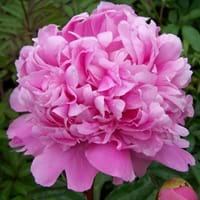Life Span
Annual
Annual and Perennial
Type
Shrub
Bulb or Corm or Tuber
Origin
China, Japan
Latin America and the Caribbean, Central America, Micronesia
Types
Not Available
Hannah Yams, Japanese Sweet Potatoes
Habitat
Grassland, Woods
Cold Regions, Tropical regions
USDA Hardiness Zone
3-9
11-12
Sunset Zone
A1, A2, A3, 1a, 1b, 2a, 2b, 3a, 3b, 4, 5, 6, 7, 8, 9, 10, 11, 14, 15, 16, 17, 18, 19, 20
21,22
Habit
Upright/Erect
Vining/Climbing
Minimum Width
Not Available
Flower Color
Light Pink, Pink, White
Not Available
Flower Color Modifier
Not Applicable
Bicolor
Fruit Color
Brown, Brownish Red, Green
Not Available
Leaf Color in Spring
Green, Light Green
Green, Purple, Light Green, Chartreuse, Bronze
Leaf Color in Summer
Red, Green, Light Green
Light Green
Leaf Color in Fall
Red, Green, Light Green
Several shades of Green
Leaf Color in Winter
Green
Light Green
Leaf Shape
Arrowhead
Heart-shaped
Plant Season
Early Fall
Spring, Summer, Fall, Winter
Sunlight
Full Sun, Partial shade
Full Sun, Partial Sun
Growth Rate
Medium
Very Fast
Type of Soil
Loamy, Well drained
Clay, Loam, Sand
The pH of Soil
Neutral
Acidic, Neutral, Alkaline
Soil Drainage
Moist
Well drained
Bloom Time
Early Summer, Late Spring, Spring, Summer
Late Fall, Early Winter, Winter
Tolerances
Cold climate, Heat Tolerance
Drought
Where to Plant?
Ground, Pot
Ground, Pot
How to Plant?
Budding
Stem Cutting, Tuber propagation
Plant Maintenance
Medium
Medium
Watering Requirements
Requires regular watering
Average Water Needs, Needs a lot of water initially
In Summer
Lots of watering
Lots of watering
In Spring
Moderate
Moderate
In Winter
Average Water
Average Water
Soil pH
Neutral
Acidic, Neutral, Alkaline
Soil Type
Loam
Clay, Loam, Sand
Soil Drainage Capacity
Well drained
Well drained
Sun Exposure
Full Sun, Partial Sun
Full Sun, Partial Sun
Pruning
Remove damaged leaves, Remove dead branches, Remove dead leaves
Remove damaged leaves, Remove dead branches, Remove dead leaves
Fertilizers
All-Purpose Liquid Fertilizer
All-Purpose Liquid Fertilizer
Pests and Diseases
Botrytis Blight, Nematodes, Ring spot, Stem rot, Verticillium Wilt
Aphids, Beetles, Leafminers, Red blotch
Plant Tolerance
Drought
Drought
Flower Petal Number
Not Available
Single
Foliage Texture
Coarse
Coarse
Foliage Sheen
Glossy
Matte
Attracts
Ants
Aphids, Beetles, Mites, white worms
Allergy
Abdominal pain, Avoid during Pregnancy, Stomach pain, Vomiting
Abdominal pain, Skin rash, Swelling, Vomiting
Aesthetic Uses
Landscape Designing, Showy Purposes
Not Used For Aesthetic Purpose
Beauty Benefits
Not Available
Not Available
Environmental Uses
Air purification
Air purification
Medicinal Uses
Atherosclerosis, Chronic fatigue, Cold, Cough, Gout, Headache, hemorrhoids, Hepatitis, Liver problems, Menstrual Cramps, Muscle Pain, Nerve pain, Osteoarthritis, Premenstrual syndrome, Respiratory Disorders, Treating fever
Potassium, ß-carotene, Vitamin C
Part of Plant Used
Flowers, Root, Seeds
Leaves, Root, Shoots
Other Uses
Showy Purposes, Traditional medicine, Use in Chinese herbology
Used As Food, Used for its medicinal properties
Used As Indoor Plant
Sometimes
Yes
Used As Outdoor Plant
Yes
Yes
Garden Design
Cutflower, Feature Plant, Foundation, Mixed Border
Container, Edible, Groundcover, Hanging Basket, Herb / Vegetable, Mixed Border, Vine
Botanical Name
Paonia lactiflora
IPOMOEA batatas
Common Name
Chinese Peony
Sweet Potato, Sweet Potato Vine
In Hindi
Paonia lactiflora
शकरकंद
In German
Paonia lactiflora
Süßkartoffel
In French
Paonia lactiflora
Patate douce
In Spanish
lactiflora paonia
Batata
In Greek
Paonia lactiflora
Γλυκοπατάτα
In Portuguese
Paonia lactiflora
Batata doce
In Polish
Paonia lactiflora
Słodki ziemniak
In Latin
Paonia lactiflora
Dulcis SOLANUM TUBEROSUM
Phylum
Magnoliophyta
Magnoliophyta
Class
Magnoliopsida
Magnoliopsida
Order
Dilleniales
Solanales
Family
Paeoniaceae
Convolvulaceae
Clade
Angiosperms, Core eudicots, Eudicots
Angiosperms, Asterids, Eudicots
Tribe
Not Available
Not Available
Subfamily
Not Available
Not Available
Importance of Paeonia Lactiflora and Sweet Potato
Want to have the most appropriate plant for your garden? You might want to know the importance of Paeonia Lactiflora and Sweet Potato. Basically, these two plants vary in many aspects. Compare Paeonia Lactiflora and Sweet Potato as they differ in many characteristics such as their life, care, benefits, facts, etc. Every gardener must at least have the slightest clue about the plants he wants to plant in his garden. Compare their benefits, which differ in many ways like facts and uses. The medicinal use of Paeonia Lactiflora is Atherosclerosis, Chronic fatigue, Cold, Cough, Gout, Headache, hemorrhoids, Hepatitis, Liver problems, Menstrual Cramps, Muscle Pain, Nerve pain, Osteoarthritis, Premenstrual syndrome, Respiratory Disorders and Treating fever whereas of Sweet Potato is Potassium, ß-carotene and Vitamin C. Paeonia Lactiflora has beauty benefits as follows: Not Available while Sweet Potato has beauty benefits as follows: Not Available.
Compare Facts of Paeonia Lactiflora vs Sweet Potato
How to choose the best garden plant for your garden depending upon its facts? Here garden plant comparison will help you to solve this query. Compare the facts of Paeonia Lactiflora vs Sweet Potato and know which one to choose. As garden plants have benefits and other uses, allergy is also a major drawback of plants for some people. Allergic reactions of Paeonia Lactiflora are Abdominal pain, Avoid during Pregnancy, Stomach pain and Vomiting whereas of Sweet Potato have Abdominal pain, Skin rash, Swelling and Vomiting respectively. Having a fruit bearing plant in your garden can be a plus point of your garden. Paeonia Lactiflora has no showy fruits and Sweet Potato has no showy fruits. Also Paeonia Lactiflora is not flowering and Sweet Potato is not flowering . You can compare Paeonia Lactiflora and Sweet Potato facts and facts of other plants too.



